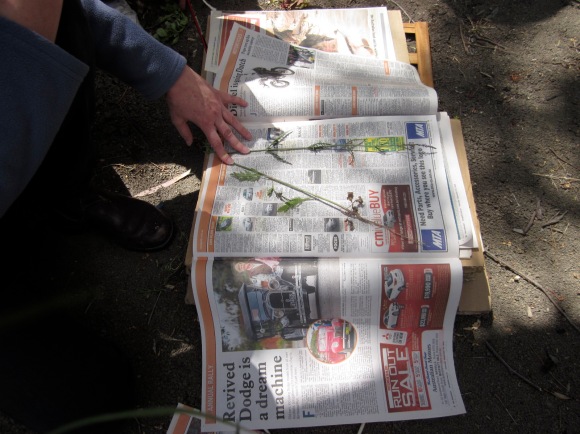Despite me interrupting myself with posts about books and flowers, I am following a thread of the Beckler’s Botanical Bounty Project. Have a look here to see what this project is and here and here to find out about plant identification.
After the plant has been accurately identified it needs to be collected, labelled and pressed. (It is illegal to pick wildflowers in Australia. We have a permit that allows us to do so.)
Keep in mind that you can only collect a small percentage of the plants in the area. We needed 4 specimens — a maximum of 5% of all of that species around. If it was a specimen from tree or bush it could only be 5% of that plant.


 Tabloid-size newspaper is laid so that one sheet is inside the other and so the writing is upside down. The scientific reason for doing this? So you wont be distracted by reading the articles!
Tabloid-size newspaper is laid so that one sheet is inside the other and so the writing is upside down. The scientific reason for doing this? So you wont be distracted by reading the articles!
If the specimen is too long it is bent, not cut. To help with identification it is necessary to include as many different parts of the plant as possible, including the root.

A tag, which includes the label number and plant name, is attached to the plant. This helps to keep track of the specimens. A collector will have many in the press by the end of the trip.

The name of the specimen is written on the end of the newspaper. It is another way to help keep track of the specimens. As well it saves having to open each one when looking for a particular specimen.

This process had to be repeated for 4 specimens of the plant. One will go to the National Herbarium of Victoria in Melbourne, as that is where Beckler’s specimens are. We are collecting in New South Wales, so, as a courtesy, one will go to the Herbarium of New South Wales in Sydney. One is for our own collection. Then there is the specimen we use for the painting.
Lastly, and very importantly, the label needs to be filled in. On this pad is recorded as much detail as possible about where the plant was collected. What is the habitat like? The soil type? Are there weeds about? Is it prolific? Under which trees? GPS co-ordinates will help future collectors know where to begin to look.




